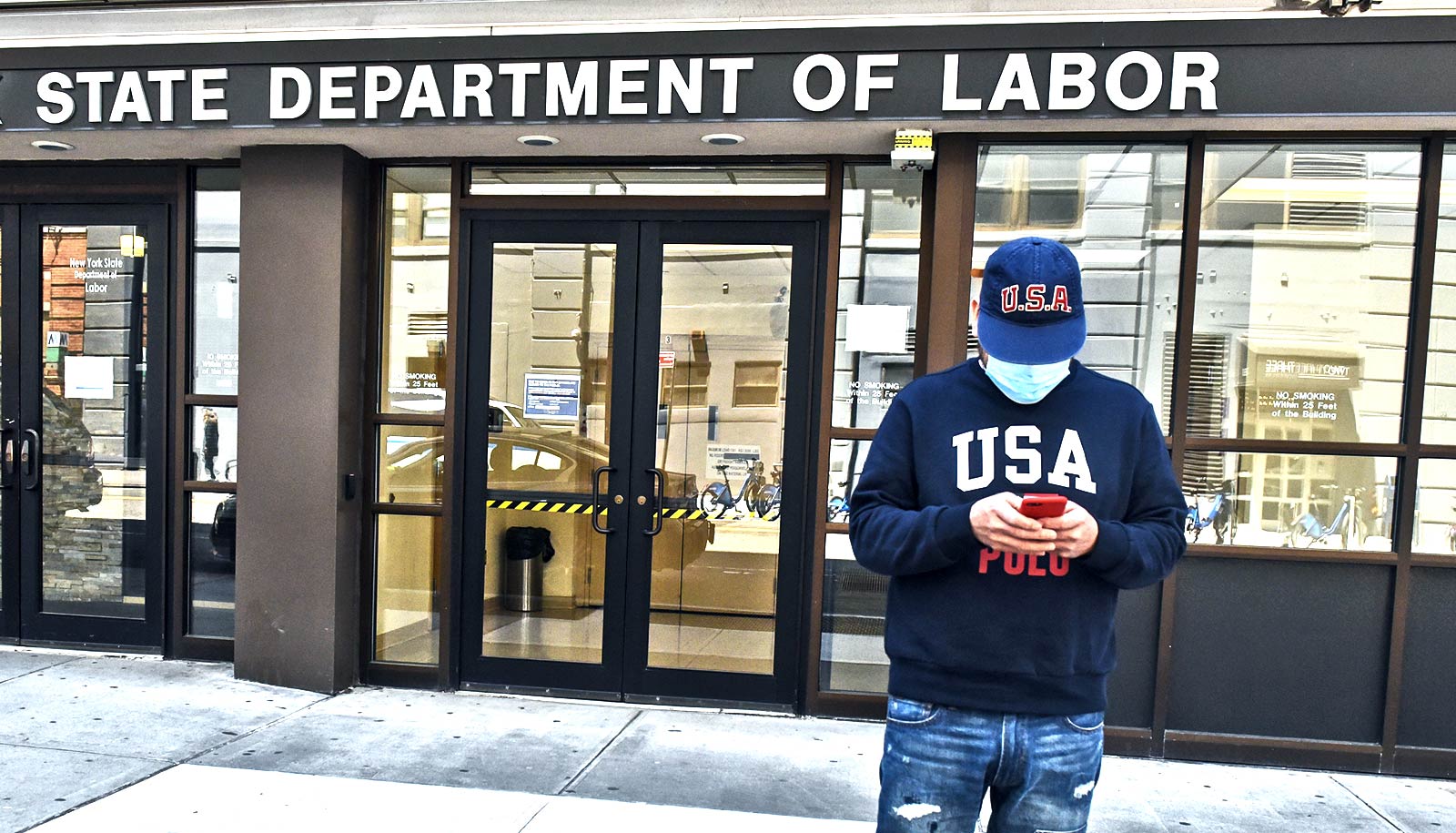In some ways, the events of 2020 may end up transforming the workplace for good, organizational psychologist Songqi Liu argues.
Between the surge of furloughs and job losses related to COVID-19, the large-scale transition to remote work, the erosion of work-life balance for working parents, and the greater emphasis on diversity and inclusion, “this year is upending a lot of workplace norms,” says Liu, an associate professor of management at the J. Mack Robinson College of Business at Georgia State University. Liu studies employment-related adjustment processes over time.
Here, he talks about how workers and organizations can adapt to the “new normal”:
The COVID-19 pandemic has hit the workforce hard. How does widespread unemployment affect job seekers?
Based on estimates from the International Labour Organization, there was a 14% drop in global working hours in the second quarter of 2020. That’s the equivalent of the loss of 400 million full-time jobs.
In the US, the amount of unemployment and underemployment is alarming, in part because research generally suggests that unemployment can severely compromise not just financial health but mental health.
Poverty nearly triples among families with a parent unemployed six months or longer, and unemployment may lead to depression, anxiety, low self-esteem, marital dissatisfaction, and even increased risk of death. Psychologically, you might feel less singled out when you’re among an army of job seekers, but the reality is, the higher the unemployment rate, the harder it is to find a job.
In debating whether to extend coronavirus unemployment benefits, some have argued that the extra money disincentivizes job seekers. What does the research say?
We’ve been tracking how things like unemployment benefits impact job search behavior and attitudes. It is true that offering more generous unemployment benefits could prolong the spell of unemployment, because people are less desperate.
But while a poor safety net tends to push people into jobs faster, it also pushes them into lower-quality, lower-paying jobs. That could have a negative impact on their earning potential for the rest of their lives. Overqualified workers are also less happy in their jobs, and can even be counterproductive.
What can job seekers do to help improve their chances of finding new employment?
Success in a job search is largely contingent on two things: A person’s skills and their motivation. It’s not a complicated process but it’s a self-regulative process. There’s nobody to tell you what to do. That’s why programs that can help you put together a resume or hone your networking skills can be really valuable.
Together with colleagues from the University of Minnesota, I recently conducted a study documenting the effectiveness of a short-term online job search networking program called Building Relationships and Improving Opportunities, or BRIO. We showed that the intervention increased the time and effort that people put into networking, how much confidence they had in their networking skills, the benefits they obtained from networking, and the quality of reemployment.
In the wake of the summer’s widespread protests, more organizations are focused on diversity, equity, and inclusion. But one of the biggest barriers to those efforts is something called “stereotype threat.” What is that, exactly?
Stereotype threat is a phenomenon that occurs when individuals are at risk of confirming a negative stereotype about their social group. If your group identity is made salient in a testing or performance environment, you worry so much about confirming a negative stereotype associated with that identity that you end up performing more poorly.
For example, research has shown that Black college students perform worse on standardized tests when their race is made more salient. Similarly, women perform worse on STEM (science, technology, engineering, and mathematics) tests when their gender is emphasized. A lot of the achievement gap may be due not to a significant difference in ability but the anxiety that drives people to underperform.
You recently analyzed the effectiveness of interventions to combat stereotype threat. What did you learn?
One effective strategy is to associate group membership with a positive image rather than a negative one. Representation matters, in that context. If the only career role models you’re exposed to fit a certain profile (say, a white male), you may think “this is not the right field for me.” It significantly affects people’s career aspirations and their confidence in choosing a certain field of study.
Research has also shown that blurring social group boundaries by emphasizing commonalities rather than differences can improve performance. Rather than talking about how women are different than men, for example, let’s talk about what makes both of them successful.
Promoting social belongingness is also critical. When members of underrepresented groups first arrive on campus or in an organization, and they see that they’re the minority, it can lead them to question whether they truly belong. Social belongingness interventions focus on letting people know that they’re not alone, providing them with the connections and guidance to help them succeed.
How can addressing stereotype threat help organizations improve diversity?
Being a numeric anomaly—the only woman or the only Black person to be considered for an assignment, for example—may provoke stereotype threat, by suggesting that being a member of that group is a source of stigma.
If you walk down the hall during your on-site job interview and you realize that nobody else looks like you, it makes you question whether there’s really a path for success for you there. If organizations don’t reduce these cues, it becomes a negative spiral: They’re not diverse enough, which makes it harder for them to attract high-quality diverse candidates.
One area of your research is focused on how working parents cope with professional and family demands. COVID-19 has thrown into stark relief the precariousness of this balancing act. What do you think the outcome of the pandemic will be for working parents?
The pandemic is putting tremendous pressure on working parents. I’m experiencing this myself as my wife and I are juggling two jobs and three young children.
Long-term, the impacts may be threefold. One, people may be putting their career aspirations aside, at least temporarily, to accommodate their parenting responsibilities. We know that foregoing a promotion, reducing your work hours, or temporarily leaving the workforce can have significant repercussions for your career and earning potential for years or even decades.
The second thing is that mothers and fathers are having to engage in a lot more coordination and negotiation to cope with work-life balance, especially against the backdrop of a pandemic. This may be uncovering inequities. My wife is an essential worker, for example, while I have a much more flexible schedule as a professor. This is a privilege that has allowed me to take on more family responsibilities than maybe I would have in the past.
Workplace norms may also be changing because caregiving has been made so much more visible among both male and female workers. Traditionally, it was expected that women would shoulder most of the caregiving responsibilities, and yet as an employee, it carried a career penalty. One positive impact from the pandemic may be that workplaces become more accepting of caregiving and more willing to grant accommodations like telecommuting.
Source: Georgia State University



